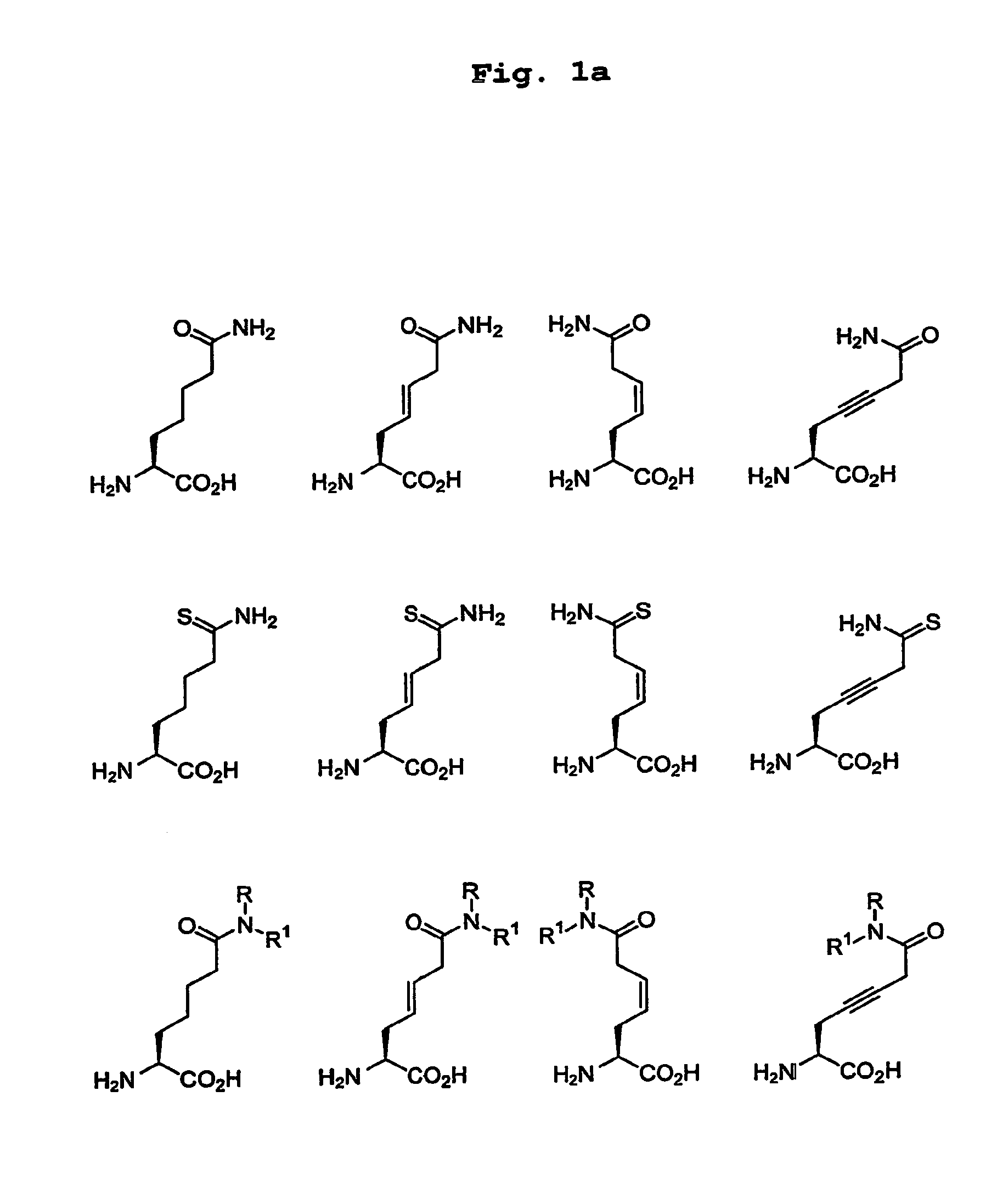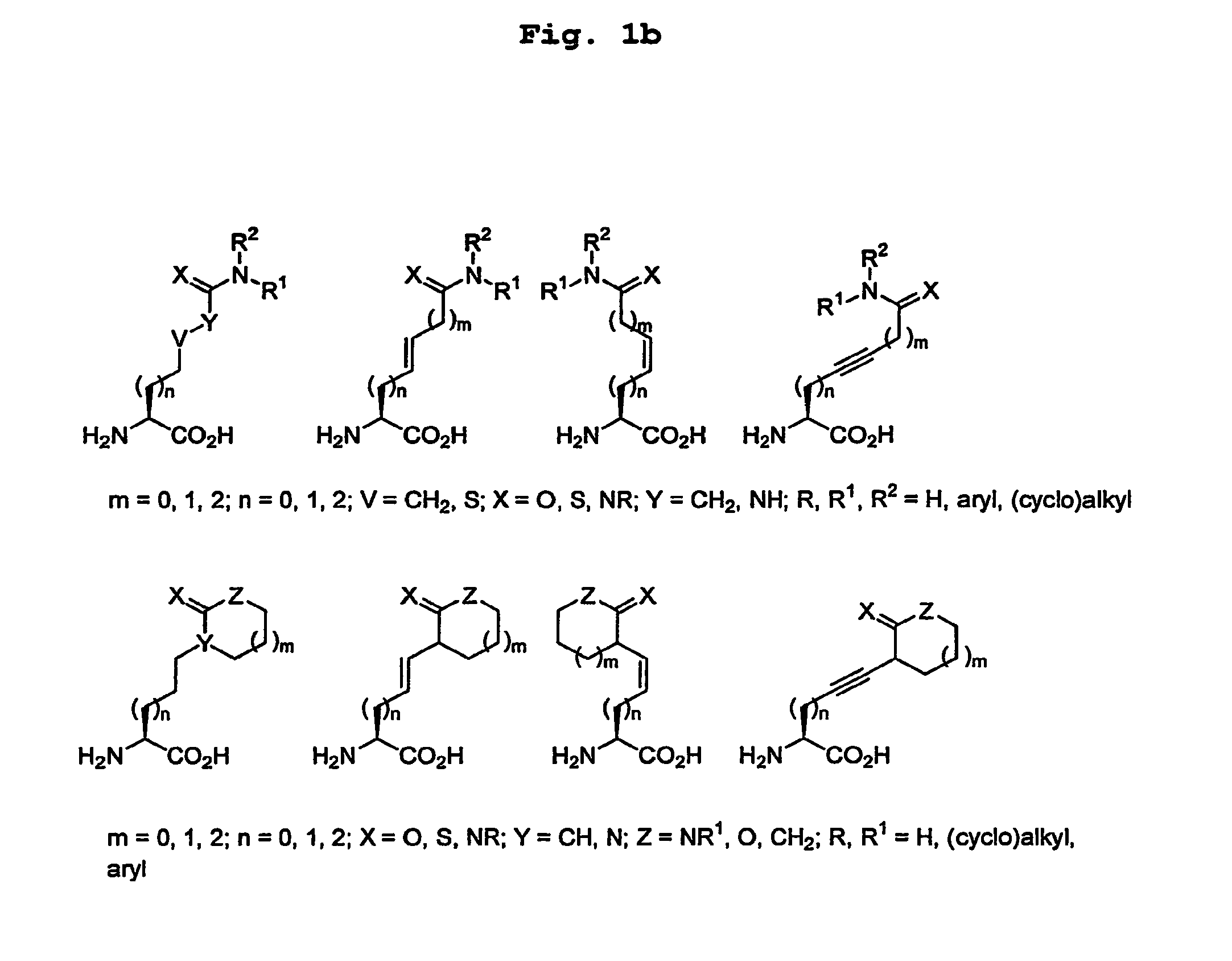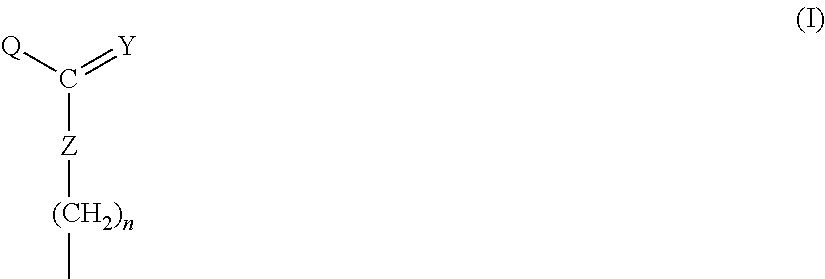Method of detecting auto-antibodies from patients suffering from rheumatoid arthritis, a peptide and an assay kit
a technology for detecting autoantibodies and rheumatoid arthritis, which is applied in the field of detecting autoantibodies from can solve the problem of detecting a limited number of patients suffering from rheumatoid arthritis
- Summary
- Abstract
- Description
- Claims
- Application Information
AI Technical Summary
Benefits of technology
Problems solved by technology
Method used
Image
Examples
example 1
Peptide Synthesis
[0109]Citrullinated peptides were synthesised as described by De Koster, H. S., et al. (J. Immunol. Methods, 187, pp. 177-188, (1995)). Beads were used to which the peptide molecules were attached via an amide bond so that after the removal of protective groups, peptide molecules were still attached to the bead. For the synthesis of peptides an automated multiple peptide synthesiser was used (Abimed AMS422, Abimed, Langenfeld, Germany). The incorporated amino acids and the peptide linker 6-aminohexane acid were protected by a Fmoc-group, and to facilitate coupling, the protected amino acids were activated with PyBOP and N-methylmorpholine. Where necessary, the side chains were protected with groups protecting acid-sensitive side chains. The beads used had a diameter of approximately 100 μm and comprised approximately 100 pmol peptide each. It is estimated that approximately 0.5% of this amount is bound to the outside and is in principle accessible to antibodies.
[011...
example 2
Reaction of the Bead-Coupled Peptides with Sera from Patients Suffering from Rheumatoid Arthritis (RA)
[0121]With the aid of Protein A-Sepharose, IgG was isolated from serum from patients clinically diagnosed to be suffering from RA. The beads were incubated with a solution comprising i) total serum from the patient, or ii) IgG from a patient conjugated to a reporter enzyme (alkaline phosphatase labelling kit; Roche / Boehringer, Mannheim, Germany). For serum (i) a second incubation was carried out with an alkaline phosphatase conjugated anti-human IgG antibody (Dako D0336; Dako Immunoglobulins, Glostrup, Denmark). After each incubation the beads were thoroughly washed with Tris-HCl buffer pH 8.9 (50 mM Tris pH 8.9, 150 mM NaCl, 0.5% Tween® 20).
[0122]The beads with peptides that had bound the most human IgG (after dying with a substrate of alkaline phosphatase that is converted into an insoluble coloured product, these become the most intensely coloured beads) were selected with the ai...
example 3
ELISA
[0123]The most interesting peptides were synthesised in a slightly larger quantity to form a linear and a cyclic variant, and in most cases in a citrulline and arginine (=control) variant. These peptides were tested for reactivity with a series of sera from RA patients. The peptides were coated to ELISA plates and incubated with sera from RA patients. Each serum was tested in duplicate. Sera from healthy persons were used as negative control.
PUM
| Property | Measurement | Unit |
|---|---|---|
| diameter | aaaaa | aaaaa |
| pH | aaaaa | aaaaa |
| width | aaaaa | aaaaa |
Abstract
Description
Claims
Application Information
 Login to View More
Login to View More - R&D
- Intellectual Property
- Life Sciences
- Materials
- Tech Scout
- Unparalleled Data Quality
- Higher Quality Content
- 60% Fewer Hallucinations
Browse by: Latest US Patents, China's latest patents, Technical Efficacy Thesaurus, Application Domain, Technology Topic, Popular Technical Reports.
© 2025 PatSnap. All rights reserved.Legal|Privacy policy|Modern Slavery Act Transparency Statement|Sitemap|About US| Contact US: help@patsnap.com



